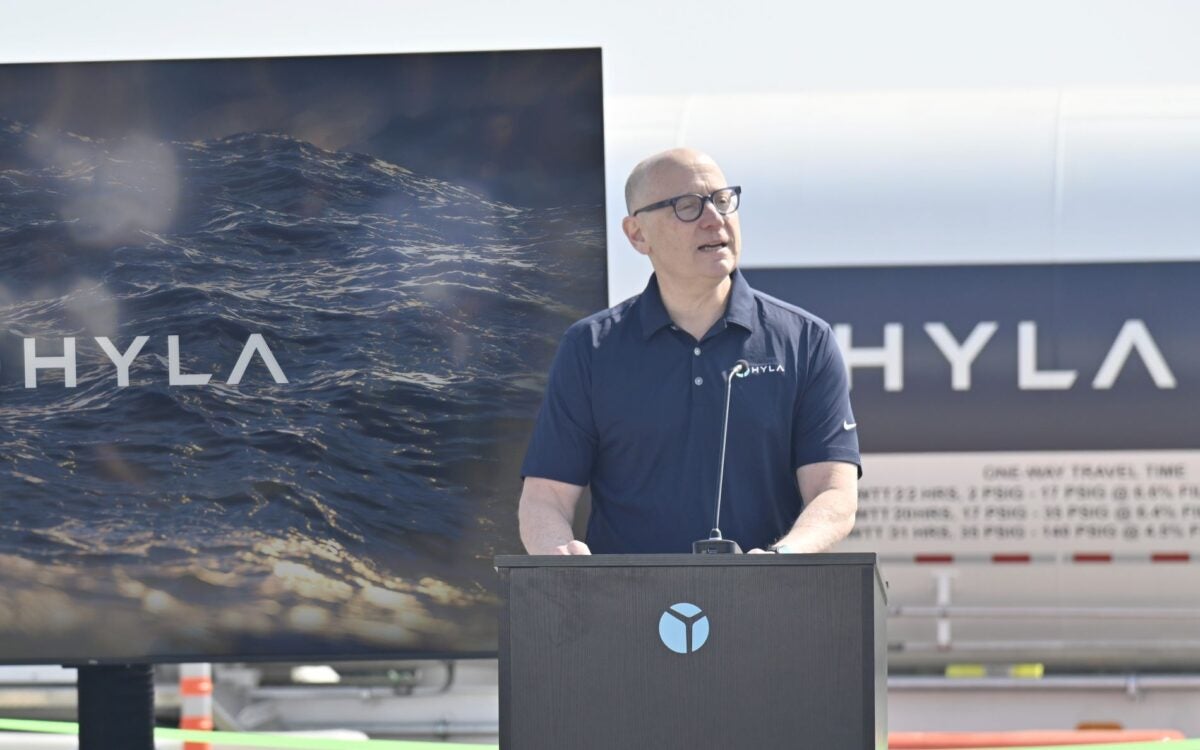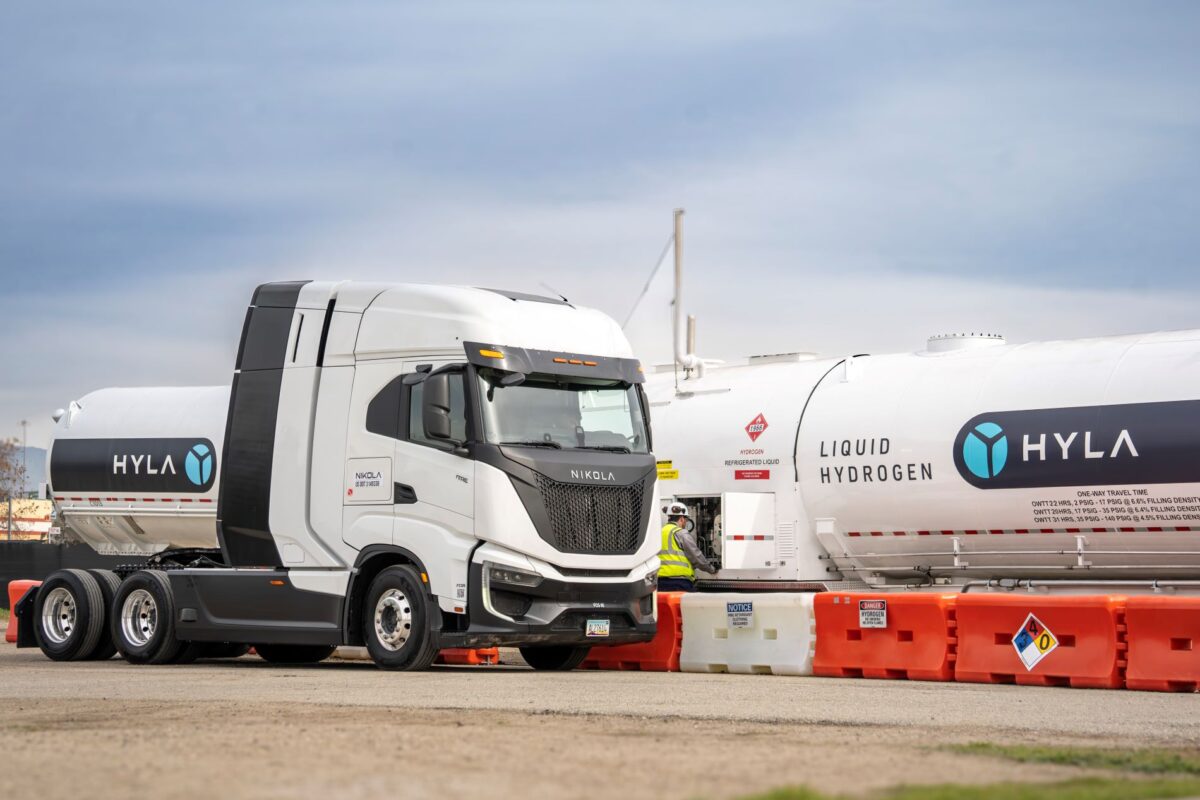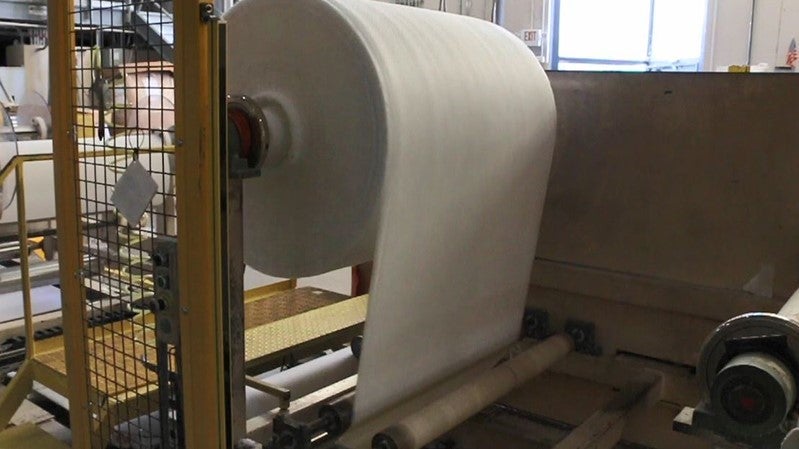If freight brokers weren’t so preoccupied with celebrating competitor missteps, one of them might have beaten Robert Bosch to RevX — a spot load aggregation tool that also flags double brokering.
The cloud-based RevX is the second product from the German auto supplier’s global Logistics Operating System (L.OS), aimed at simplifying technology and operational processes in transportation and logistics. L.OS launched in December with a goal of generating more than $540 million in freight-related revenue annually by 2030.
Bosch revealed RevX — developed in the U.S. for the U.S. — on Thursday at the Mid-America Trucking Show in Louisville, Kentucky, a target-rich environment for the industry stakeholders Bosch wants to attract. The goal is reducing the 35% empty miles that trucks run every year, according to the U.S. Department of Transportation’s Bureau of Transportation Statistics.
“Think about what just a 5% reduction in empty miles would mean to the industry,” said Luke Hugel, who oversees Bosch Mobility Platform and Solutions, North America.

The subscription-based software as a service provides a view of more than 1.5 million available loads across five or more load boards including giants Uber Freight, DAT, TruckStop and up to 65,000 private brokerages whose loads typically are not publicly listed.
Up to 50% savings in load discovery and booking via RevX
It could save 33%-50% of the time a dispatcher spends discovering and booking a load, Hugel told me.
That varies based on fleet size and complexity. A regional dispatcher focused on a group of trucks would make more queries than a dispatcher covering a dedicated route and seeking only loads for backhaul.
“The reality is that there’s not one source that they use. Most dispatchers are looking across multiple load boards and multiple brokers,” Hugel said. “So the first value proposition of the RevX solution is to aggregate.
“Instead of a dispatcher having eight tabs open, now they can see their search results in one spot,” Hugel said. RevX focuses on true revenue and costs of loads, leaving soft sides of the business like driver amenities to others to figure out. RevX features a single call or email for a dispatcher to win the load in a competitive marketplace.
Eventually, Bosch sees adding an AI-based load recommendation engine. That would free the dispatcher to focus on communication duties instead of searching for loads.
Shade-throwing brokers could have done this
Load boards and brokers are eager to participate because it helps them get more loads covered while potentially growing their business. As a systems, software and hardware developer, Bosch more than knows the trucking business. In selecting and winning loads, it is a facilitator, not a competitor.
Why hasn’t this already been done?
“You don’t have to look far to see some of the animosity between the load boards,” Hugel said, referring to negative comments over DAT’s intermittent service outages. “They’re very good at throwing shade when the other guy has a problem. That is one constraint of why an existing broker wouldn’t be able to do this.
“They have that natural competitive environment whereas we don’t have a load board ourselves.”
Understanding RevX means knowing what it isn’t. For example, driver app aggregator Platform Science and Geotab Marketplace’s fleet management software are not comparable.
“This is a dispatcher’s tool,” Hugel said. “This is not a telematics-driven offering. You don’t need anything more than an ELD, which is required by law.”
RevX flags double-brokered loads
RevX has the ability to spot and flag double-brokering, “one of the biggest nerve points in the industry,” Hugel said.
“If a search comes back with the same load from multiple sources, it is showing where that original posting was, and you can see who’s posting. We spent a significant amount of time with that question because we feel there is value for the industry in doing this. No one wants to be associated with double-brokered loads.”
As for launching RevX, Bosch is offering it free for one month to anyone that wants it.
Nikola will seek a third boost in authorized shares
Nikola celebrated the opening of its first Hyla high-pressure modular fueling station in Ontario, California, on Thursday. Alas, the fuel cell electric vehicle (FCEV) and hydrogen fuel distributor faces other high-pressure matters.

Hydrogen fuel is pricey and scarce. Parts deliveries are slow, contributing to the trucks’ production costs outstripping what Nikola can charge for them by hundreds of thousands of dollars each.

With a stock price submerged below $1 a share since Dec. 5, Nikola faces delisting from the Nasdaq on July 17. But as devastating as that would be, it is also unlikely.
Nikola (NASDAQ: NKLA) has moves that could allow it to wrestle free. Most likely is a reverse stock split. The company could exchange a single share of stock for a multiple of existing shares. That would cosmetically push the price above a dollar, the threshold the Nasdaq requires for 30 consecutive days to stop the delisting clock. Another option is seeking a 180-day extension, which Nasdaq often allows.
An unexplained run-up — possibly a short squeeze — in Nikola shares last year saw them rise from 54 cents to $3.40 in two months. Whatever the reason, it was more than enough for Nasdaq to lift a delisting warning to Nikola it had issued in May. The share price has since tumbled, languishing between 60 and 70 cents since early March.
Solid Q1 revenue could help Nikola’s case
The Nasdaq doesn’t have to recognize a reverse split as meaningfully raising the price of the stock. But in many cases, it does. If Nikola shows significant Q1 revenue from selling Tre FCEVs, the exchange could consider it positive momentum, even with a lagging stock price.
Having issued new shares to raise cash, Nikola’s outstanding share count has swelled to more than a billion. Seeking shareholder approval to authorize more shares for the third time in three years might be cosmetically more palatable with fewer authorized shares. Adding to the existing authorization of 1.6 billion shares might not.
In any case, it’s a risky play. Nikola said so in its Feb. 28 10-K filing with the Securities and Exchange Commission.
“We also need to increase our authorized common stock, which is subject to stockholder approval, and we may not be able to obtain such approval on a timely basis or at all,” the filing said.
Nikola’s cash position isn’t helped by having to chase down convicted founder Trevor Milton to collect on a $165 million arbitration award.
When a spinoff acts like a share buyback
Cummins Inc. decided some time ago that its filtration business, a heroic player in repurposing feedstock for N95 masks during the pandemic, was no longer a good fit in the company’s strategy. But Cummins saw it as a good business nonetheless.
On-highway, heavy-, medium- and light-duty trucks, off-highway industrial equipment, and power generation use filtration products. Cummins makes engines for all of them.
“We are always looking at our portfolio,” CEO Jennifer Rumsey told me in a recent Truck Tech podcast interview. “The filtration business has some great technology and great capability. [But] their opportunity to grow really starts to diverge to different areas than where Cummins is growing.”

In 2022, the engine and power products maker began splitting off and standing up Atmus Filtration Technologies. Cummins put money into Atmus ahead of a $273 million initial public offering in May. It retained 80.5% of the new company, valued at $1.5 billion.
The Columbus, Indiana-based company on Monday completed an exchange of shares in the new company for its stake. Though not technically a share buyback, Cummins took in 5.5 million shares of its stock from investors in exchange for about 67 million Atmus shares.
“Establishing a new business made the most sense for our investors,” Rumsey said.
Jay Kesten, an associate professor in the Florida State University College of Law who specializes in corporate law, mergers and acquisitions, lauded the move.
“Cummins’ spinoff strategy is an elegant win-win,” he told me. “The company’s current shareholders [get] to invest in either Cummins or Atmus as a stand-alone company or to remain invested in both simultaneously. At the same time, Cummins reduced its outstanding stock float – similar to a share buyback – without the usual depletion of its cash reserves.”
Truck Tech episode No. 59: A look at Workhorse’s $34 million plant makeover
That’s it for this week. Thanks for reading and watching. Click here to get Truck Tech via email on Fridays. And catch the latest in major events and hear from the top players on “Truck Tech” at 3 p.m. Wednesdays on the FreightWaves YouTube channel.Your feedback and suggestions are always welcome. Write to aadler@freightwaves.com.








Driver
And the shiny solve-it-all RevX platform goes online in 3 .. 2 .. 1 … uhm, maybe sometime next year
If only press releases could drive
Artificial Intelligence Digital Freight Matching on the Blockchain with Driverless Trucks
This is all the same buzzwords from like 2018-2020. “reduce empty miles”…. “load matching”….
How’d that work out for all those folks? Brb gonna call Convoy for a load real quick.